March 26, 2018
March is Women’s History Month. For too long, women have been advocating for themselves and fighting for equality and opportunity in all aspects of life.
Women have made huge strides in education, and helped influence changes and bring awareness to unique issues in the system. From the push to accepting neurodiversity in students, to demanding girls all over the world having access to education, these women deserve recognition for their contributions to education.
Anne Sullivan
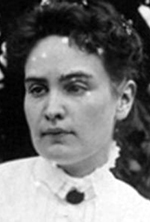 “Keep on beginning and failing. Each time you fail, start all over again, and you will grow stronger until you have accomplished a purpose – not the one you began with perhaps, but one you’ll be glad to remember.”
“Keep on beginning and failing. Each time you fail, start all over again, and you will grow stronger until you have accomplished a purpose – not the one you began with perhaps, but one you’ll be glad to remember.”
Many teachers know that with some students, persistence is the key to unlocking their potential. Anne Sullivan is best known for her work with Helen Keller, a woman who was both blind and deaf. Anne had her fair share of adversity in her life. At a young age, she contracted an eye disease that severely damaged her sight. After her mother died, her father abandoned her and her siblings, leaving them to grow up as orphans in a community house for the poor. After learning that there were special schools for those who were blind, Anne was insistent on getting an education and escaping poverty. She went on to attend Perkins School for the Blind and graduated valedictorian. At 20, she went to work with Helen Keller. Helen was a difficult student, but Anne pushed her to succeed. In months, Helen learned almost 600 words, most of her multiplication tables and how to read braille. With Anne’s unwavering support, Helen went on to be the first deaf-blind person to graduate from college.
For more information visit: https://www.biography.com/people/anne-sullivan-9498826
Helen Keller
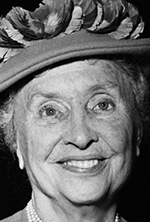 “Optimism is the faith that leads to achievement. Nothing can be done without hope and confidence.”
“Optimism is the faith that leads to achievement. Nothing can be done without hope and confidence.”
Helen Keller is a crusader. Stricken with an illness that left her deaf and blind at 19 months old, Helen had many struggles to overcome. Through the help of her teacher, Anne Sullivan, Helen was able to learn to communicate and attend school. Overcoming her disabilities pushed her into the public eye. She published her first book while in college, detailing her early life and education. She went on to publish four more books on her personal experiences, and many more on social issues and religion. Helen used her celebrity to advocate for the education of those who were blind. She also made the public aware of significant issues that came with blindness. In 1924, she joined the staff of the American Foundation for the Blind, an organization that helps those who are blind access life-improving resources. Due to her advocacy, the organization became well-known and attracted many donors. Today, the organization is still a popular resource for those who are blind. Helen Keller changed the way people view those with disabilities, and helped shape the education aimed towards those who are blind.
For more information visit: http://www.history.com/topics/helen-keller
Ruby Bridges
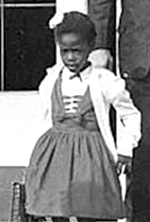 “Don’t follow the path. Go where there is no path and begin the trail. When you start a new trail equipped with courage, strength and conviction, the only thing that can stop you is you.”
“Don’t follow the path. Go where there is no path and begin the trail. When you start a new trail equipped with courage, strength and conviction, the only thing that can stop you is you.”
A picture of strength and courage at only 6 years old, Ruby Bridges was the first black child in a desegregated school. On her first day, she was escorted into school by federal marshals. Ruby was greeted by angry adults, spewing racism and throwing objects at her, hoping to frighten her. Parents did not allow their children to attend school in protest. Due to parents’ protests, Ruby was isolated from the rest of her classmates. She continued to be escorted by federal marshals, and was greeted with a new threat every day. A woman threatened to poison her, another brought a coffin with a black doll in it to show Ruby. Even in the face of vile hatred, she persisted. Eventually, people stopped protesting. She continued her education through high school. Later on, she became a liaison at her old elementary school, and found a new passion. After discovering that children needed their parents to take an active role in their education to succeed, she started the Ruby Bridges Foundation, which aspires to provide children with an equal opportunity to succeed in education.
For more information visit: https://www.biography.com/people/ruby-bridges-475426
Maria Montessori
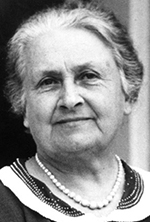 “Free the child’s potential, and you will transform him into the world.”
“Free the child’s potential, and you will transform him into the world.”
A pioneer in early childhood education, Maria Montessori was a doctor who specialized in psychiatry and pediatrics. While the director of the Orthophrenic School for developmentally disabled children, she began to study early childhood development and education. She implemented her idea of allowing children’s natural interests to take lead in education, and saw an improvement in the children’s development that led her to test her teaching methods on other children. She was placed in a school called the Children’s House and created a “prepared learning” environment, using her ideas from the Orthophrenic School. As she continued to teach, she tweaked her method. Eventually, “Montessori Schools” opened in the United States as an alternative method of learning, and are still active today.
For more information visit: https://www.biography.com/people/maria-montessori-9412528
Temple Grandin
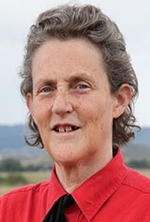 “I cannot emphasize enough the importance of a good teacher.”
“I cannot emphasize enough the importance of a good teacher.”
Most recognized for her work in animal sciences and her support of autism awareness, Temple Grandin was diagnosed with autism when it was considered “brain damage.” Even through the difficulties of being educated in a time where special education wasn’t the most diverse, Temple went on to get a PhD in animal sciences. She used her knowledge to help improve the quality of life of livestock. Temple was a strong supporter of autistic children receiving a more tailored education. She advocated retraining teachers to recognize each child’s specific fixation and use that to help them learn. She recommended early intervention in learning and promoted neurodiversity. Autism was not something to be “cured,” but something to be harnessed.
For more information visit: https://www.biography.com/people/temple-grandin-38062
Ellen Johnson Sirleaf
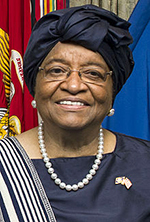 “As more men become more educated and women get educated, the value system has to be more enhanced and the respect for human dignity and human life is made better.”
“As more men become more educated and women get educated, the value system has to be more enhanced and the respect for human dignity and human life is made better.”
Ellen Johnson Sirleaf was the first elected female head of state in African history. She was born in Liberia, but left the country during a regressive regime. The leader of Liberia was waging war against its neighbors and using the nation’s children to fight. She protested these actions consistently, and was nearly jailed twice. After leaving, she continued to keep abreast of any developments, especially in government. After resistance from the international community, the regime ended. Sirleaf returned to Liberia to help rebuild the country. In 2006, she was sworn in as president. The rebuilding of Liberia started with the reduction of Liberia’s debt. Once the country became stronger, President Sirleaf focused on education and healthcare in an effort to increase the literacy rates and, subsequently, lower the poverty rate. She enacted free elementary education for all Liberian children and introduced Freedom of Information laws, being the fourth country in Africa to do so. In 2011, she was awarded the Nobel Peace Prize for her efforts in rebuilding a country torn apart by war.
For more information visit: http://www.achievement.org/achiever/ellen-johnson-sirleaf/
Laura Bush
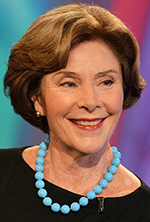 “Libraries allow children to ask questions about the world and find the answers. And the wonderful thing is that once a child learns to use a library, the doors to learning are always open.”
“Libraries allow children to ask questions about the world and find the answers. And the wonderful thing is that once a child learns to use a library, the doors to learning are always open.”
Every First Lady chooses an issue to be passionate about, and Laura Bush’s was the education of the nation’s children. Before her husband was elected president, he was the governor of Texas. During his time as governor, Laura advocated for state funding for early childhood education, which included literacy and development programs. She was successful in her endeavor. Laura was passionate about children’s access to public libraries and raised nearly $1 million in funding. During her husband’s tenure as president, Laura used the national platform to advocate for higher salaries for teachers and better training for Head Start programs. She created the initiative “Ready to Read, Ready to Learn,” which promoted reading at an early age. After leaving the White House, Laura Bush continues to advocate for improvements in education and children’s access to public libraries and other resources.
For more information visit: https://www.biography.com/people/laura-bush-9232785
Michelle Obama
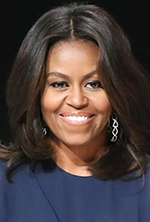 “Empower yourselves with a good education, then get out there and use that to build a country worthy of your boundless promises.”
“Empower yourselves with a good education, then get out there and use that to build a country worthy of your boundless promises.”
Michelle Obama, like her predecessor, was a strong advocate for education. Her goals included encouraging more children to pursue higher education, teaching kids to make healthier food choices and having schools offer them, and giving back to the community. While Laura Bush focused on domestic education, Michelle advocated for the education of girls around the world, especially in countries where girls were not encouraged to go to school and pursue their goals. She began “Let Girls Learn” in 2015, which sought to change the perception of women’s roles and values at all levels, from individual to institutional. This included creating an enabling environment for education, and equipping them with the skills to make life decisions. Michelle continues to advocate for young girls and women to pursue education and empower themselves.
For more information visit: https://www.biography.com/people/michelle-obama-307592
Kira Orange Jones
 “In one of the most wealthy countries in this world, there are still communities and districts that you can predict with 98% accuracy the likelihood of a child going to and through college successfully based on their ZIP code in kindergarten.”
“In one of the most wealthy countries in this world, there are still communities and districts that you can predict with 98% accuracy the likelihood of a child going to and through college successfully based on their ZIP code in kindergarten.”
Hurricane Katrina devastated many parts of the country. Communities suffered, as did education. Kira Orange Jones, a Bronx native, began an initiative to reinvent schools in New Orleans. The Teach for America executive director encouraged educators from all over the country to assist in rebuilding New Orleans’ education system. The diverse set of teachers helped each other develop innovative teaching styles, which in turn benefited the students. Since 2005, the high school graduation rate has climbed to 75% from 50%, with the number of graduates attending college doubling. Due to Kira’s education model, New Orleans’ students now outperforms Chicago, Denver and Miami on ACT tests.
For more information visit: http://time.com/3822936/kira-orange-jones-2015-time-100/
Malala Yousafzai
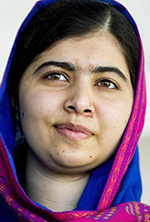
“
Let us pick up our books and our pens. They are our most powerful weapon. One child, one teacher, one book and one pen can change the world.”
At only 15 years old, Malala Yousafzai became a household name after surviving a gunshot to the head. As a child, Malala began to advocate for girls to be able to receive an education. Even after the Taliban issued a death threat to her, she stood her ground and continued to fight. On October 9, 2012, she was shot by a Taliban gunman and survived. After recovering, she persisted in her crusade to arm girls with an education. On her 16
th birthday, she gave a speech at the United Nations, urging leaders to become more progressive in education and women’s rights. At the age of 17, she became the youngest person to win a Nobel Peace Prize.
For more information visit: https://www.biography.com/people/malala-yousafzai-21362253